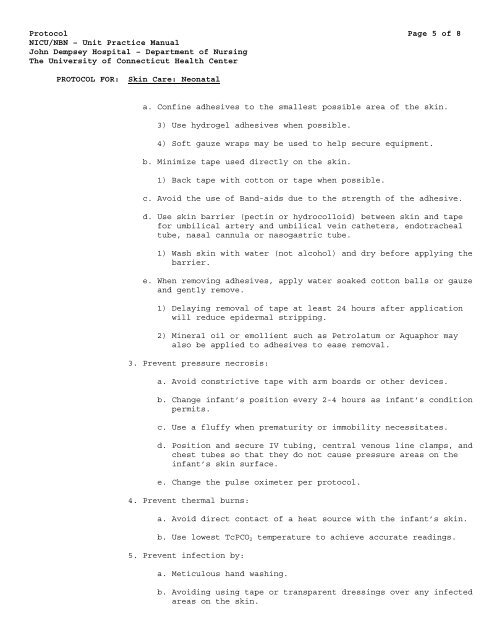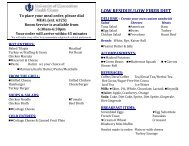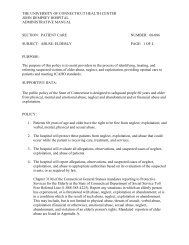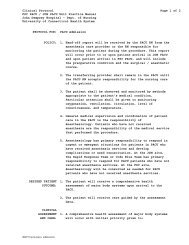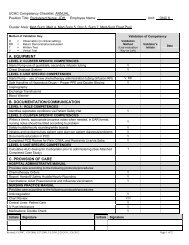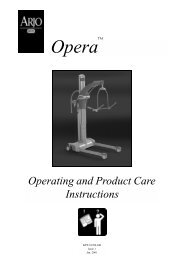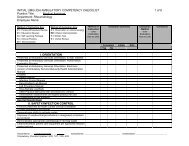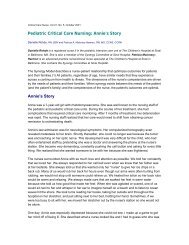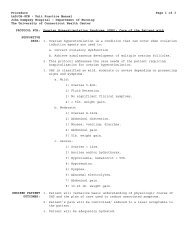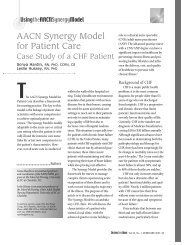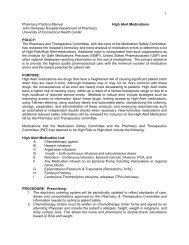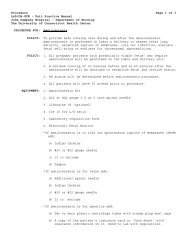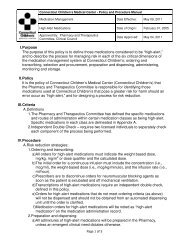Protocol Page 1 of 8 NICU/NBN - Department of Nursing - University ...
Protocol Page 1 of 8 NICU/NBN - Department of Nursing - University ...
Protocol Page 1 of 8 NICU/NBN - Department of Nursing - University ...
You also want an ePaper? Increase the reach of your titles
YUMPU automatically turns print PDFs into web optimized ePapers that Google loves.
<strong>Protocol</strong> <strong>Page</strong> 5 <strong>of</strong> 8<strong>NICU</strong>/<strong>NBN</strong> – Unit Practice ManualJohn Dempsey Hospital – <strong>Department</strong> <strong>of</strong> <strong>Nursing</strong>The <strong>University</strong> <strong>of</strong> Connecticut Health CenterPROTOCOL FOR: Skin Care: Neonatala. Confine adhesives to the smallest possible area <strong>of</strong> the skin.3) Use hydrogel adhesives when possible.4) S<strong>of</strong>t gauze wraps may be used to help secure equipment.b. Minimize tape used directly on the skin.1) Back tape with cotton or tape when possible.c. Avoid the use <strong>of</strong> Band-aids due to the strength <strong>of</strong> the adhesive.d. Use skin barrier (pectin or hydrocolloid) between skin and tapefor umbilical artery and umbilical vein catheters, endotrachealtube, nasal cannula or nasogastric tube.1) Wash skin with water (not alcohol) and dry before applying thebarrier.e. When removing adhesives, apply water soaked cotton balls or gauzeand gently remove.1) Delaying removal <strong>of</strong> tape at least 24 hours after applicationwill reduce epidermal stripping.2) Mineral oil or emollient such as Petrolatum or Aquaphor mayalso be applied to adhesives to ease removal.3. Prevent pressure necrosis:a. Avoid constrictive tape with arm boards or other devices.b. Change infant’s position every 2-4 hours as infant’s conditionpermits.c. Use a fluffy when prematurity or immobility necessitates.d. Position and secure IV tubing, central venous line clamps, andchest tubes so that they do not cause pressure areas on theinfant’s skin surface.e. Change the pulse oximeter per protocol.4. Prevent thermal burns:a. Avoid direct contact <strong>of</strong> a heat source with the infant’s skin.b. Use lowest TcPCO 2 temperature to achieve accurate readings.5. Prevent infection by:a. Meticulous hand washing.b. Avoiding using tape or transparent dressings over any infectedareas on the skin.


